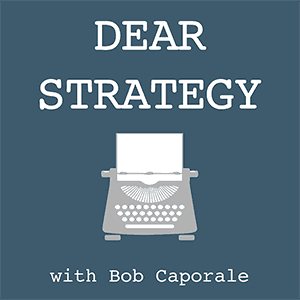Dear Strategy:
“How do you know when to move into the next phase of your strategy?”
Back in Episode 29, which you can find by clicking here, I talked about the many different terminologies that are used in strategy and how you can group those terminologies into 3 basic buckets for the purpose of keeping things simple. Well, to answer today’s question, I am going to go back to at least two of those terms and break them back out again.
The two terms we’re concerned with here are strategic goals and strategic objectives. On the surface, these may appear to be synonymous – or at least that’s how they’re often used. But, in fact, if we follow the textbooks, there is actually a subtle difference in how these two elements of a strategy are used; and that difference is pertinent to today’s question.
Goals and objectives are both used to indicate what you want to achieve with your strategy. However, goals are typically presented in the form of milestones that you want to reach, whereas objectives are presented as the measurable results that you want to achieve. This is the difference between saying “I want to be a doctor” and saying “I want to graduate from Northwestern Medical School in 4 years with a 3.9 GPA.” The former statement is a goal, while the latter statement is an objective, even though you can reach them at the same time and in the same way.
So, what’s the purpose of differentiating between these two?
Goals are useful for staging your strategy. In other words, once you reach a certain milestone, you can move onto the next one. By not tying a specific timeframe or measurement to your goal, you can allow your objectives to remain a bit more flexible as your strategy is being executed, but without changing the overall milestones that you want to reach.
So, let’s say that you have a goal to have a leading share position in Asia. You may have several time-bound, measurable objectives that are tied to this goal, and those objectives may vary slightly over time as you realize what can and cannot realistically be achieved. But your overall goal will remain constant. And when you do finally achieve that goal, it may trigger another milestone that you’ve identified in your strategy that may have a whole different set of objectives tied to it. In this way, your strategy will be in constant motion, all the while grounded by your milestone goals.
A very typical example where this methodology is used is when you are trying to go into a new market that you know very little about. It makes little sense to have a realistic goal to obtain a leading share position for a market that you currently have no presence in. So, instead, you might make that a longer-term goal, with your shorter-term goals focused around finding out more about the market, developing a plan to penetrate that market, and building a presence in the market before jumping in with both feet.
Setting up strategic goals in this way will allow you to define stages for your strategy. And when you achieve each goal, you’ll know that it’s time to move on to the next stage.
Listen to the podcast episode
Dear Strategy: Episode 033

###
Bob Caporale is the author of Creative Strategy Generation and the host of the Dear Strategy podcast. You can learn more about his work by visiting bobcaporale.com.




